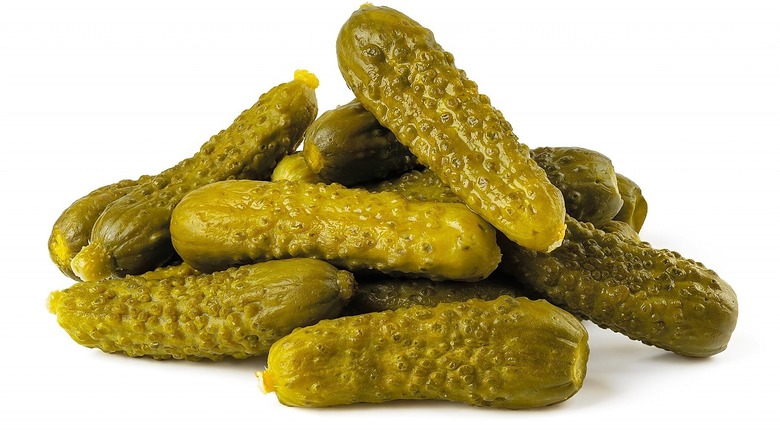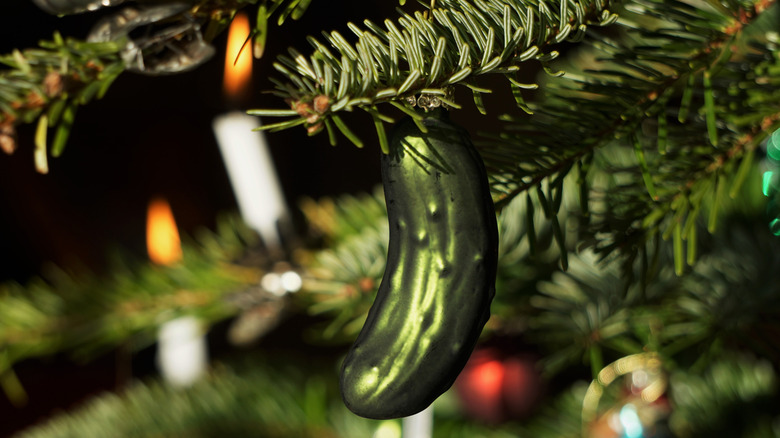The Real Meaning Behind Pickle Ornaments
The Christmas pickle, or Weihnachtsgurke, is a tradition in many Midwestern households. What it is, is a pickle-shaped ornament meant to be hung in a not-too-obvious spot on the Christmas tree. In fact, as per The New York Times, the Christmas pickle may be the last ornament added to the decorations. On Christmas morning, the first kid to spot the pickle may get a special present or at least have the privilege of opening the first gift. There's also an idea that finding the pickle will bring good luck in the new year.
While many of the families who hang the pickle year after year will tell you that this custom is German in origin, in truth, this does not appear to be the case. In 2016 YouGov polled 2,057 Germans and found that 91% of them were completely unfamiliar with any such tradition and only 2% hung pickle-shaped ornaments on their own tannenbaums. Okay, so if the Weihnachtsgurke likely isn't a German thing, where does it come from, and, more importantly, what is the meaning behind this hunt for a slightly silly-looking ornament?
The Christmas pickle may have started as a marketing gimmick
According to Tampa Bay Magazine, there are several different legends explaining why people place pickles in pine trees. One of these involves Berrien Springs, Michigan, known as the Christmas Pickle Capital of the world due to an annual Pickle Festival the city holds in July (go figure). As Berrian Springsians would have it, the pickle commemorates an apocryphal occasion when two Spanish boys were kidnapped, imprisoned in pickle barrels, then freed by jolly old St. Nick. Yet another story says that the ornament honors a German-American Civil War soldier whose failing health was restored by eating a pickle.
The most plausible explanation behind the Christmas pickle, however, is that the tradition may have been invented by someone in the marketing department of Woolworths back in the late 19th century. German glassblowers were, by this time, making ornaments shaped like all manner of things and Woolworths began importing these by around 1880. The pickle ones became particularly popular, perhaps because retailers began packaging them with a story about the alleged German good-luck tradition behind them.
Amusingly enough, the Weihnachtsgurke is finally coming full circle. While Germany has been exporting these ornaments to the U.S. market for years, The New York Times says that they're finally starting to catch on in Germany, too. The reason for this seems to be that people there find this apparently pseudo-German tradition pretty darn hilarious, as well they might.

